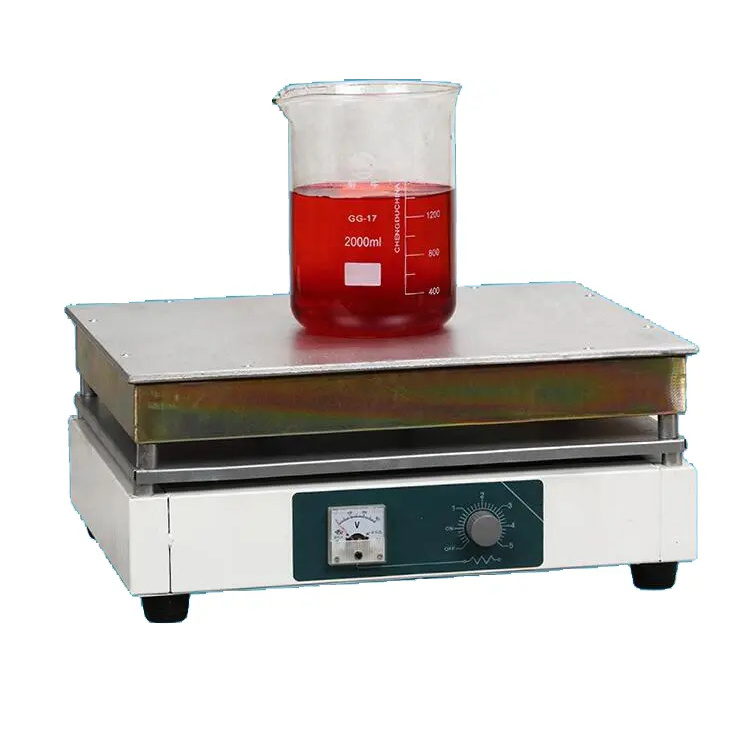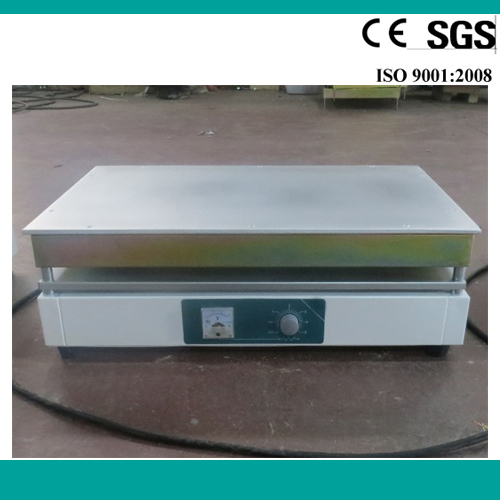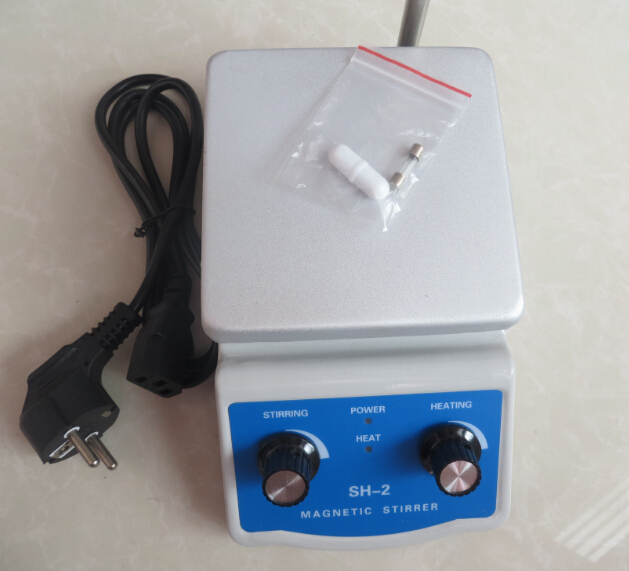Laboratory Heating Plate Good Quality And Price
- Product Description
Laboratory Heating Plate
Laboratory Hot Plate: An Essential Tool for Scientific Research
In the world of scientific research and experimentation, precision and control are of paramount importance. One of the essential tools to meet these requirements is the laboratory hotplate. Designed to provide uniform heating for a variety of laboratory applications, this versatile device is a must-have for many research institutions.
Laboratory hotplates typically consist of a flat heating surface that can accommodate various types of containers, such as beakers, flasks, and petri dishes. The heating elements are usually made of high-quality materials to ensure even heat distribution, minimizing the risk of hot spots and inaccurate results. Many modern hotplates are equipped with digital controllers, allowing researchers to precisely set and monitor the temperature. This feature is particularly beneficial for experiments that require specific temperature conditions, such as chemical reactions or biological assays.
One of the great benefits of a laboratory hot plate is its versatility. It can be used for a wide range of purposes, including heating liquids, melting solids, and even performing dry reactions. In addition, some models are compatible with magnetic stirrers, allowing for simultaneous heating and stirring, thus increasing experimental efficiency.
Safety is another key aspect of laboratory hotplates. Many units are equipped with safety features, such as over-temperature protection and automatic shut-off functions, to ensure that the unit operates within safe limits. This is particularly important in a laboratory environment, where the use of volatile substances may increase the risk of accidents.
All in all, the laboratory hot plate is an essential tool to support a wide range of scientific research. Its ability to provide precise and even heating combined with its safety and versatility make it a valuable asset to any research laboratory. As scientific discovery continues to advance, the laboratory hot plate will undoubtedly continue to be a cornerstone of experimental methods.
Uses:It is suitable for heating in laboratories, industrial and mining enterprise and scientific and research units.
Characteristics:1. It adopts closed heating style without naked fire.2. It adopts silicon controlled stepless regulating for different heating temperature. 3. The shell adopts electrostatic spraying technology. It has steady and beautiful coating surface.4. The heating surface is made of cast iron.
| Model | ML-1.5-4 | ML-2-4 | ML-3-4 |
| Specifications(mm) | 400*280 | 450*350 | 600*400 |
| Voltage | 220V/50HZ | 220V/50HZ | 220V/50HZ |
| Rated power(kw) | 1.5 | 2 | 3 |
| Max. Temperature(°C) | 350 | 350 | 350 |
| GW(kg) | 18 | 24 | 34 |



Laboratory hotplates: an essential tool for modern scientific research
In the field of scientific research and experimentation, precision and control are of vital importance. Laboratory hotplates are one of the essential tools to meet these requirements. This versatile device is widely used in various fields such as chemistry, biology and material science, providing stable and reliable heating for many applications.
A laboratory heating plate, commonly called a hot plate, is used to heat substances in a laboratory setting. It usually consists of a flat heating surface that can accommodate various types of containers, such as beakers, flasks, and petri dishes. The heating element is usually embedded within the heating plate to achieve even heat distribution and minimize the risk of hot spots that may cause inaccurate results or damage to the sample.
One of the main advantages of using a laboratory hotplate is its ability to provide precise temperature control. Many modern hotplates are equipped with digital displays and programmable settings, allowing researchers to set and maintain specific temperatures with a high degree of accuracy. This feature is particularly important for experiments that require precise thermal conditions, such as chemical reactions, bioassays, or materials testing.
Additionally, laboratory hotplates are designed with safety in mind. Many models come with features such as automatic shutoffs, overheat protection, and insulated surfaces to prevent accidental burns. These safety features are critical in a laboratory environment, where the risk of spills and accidents can be high. By ensuring that the hotplate is operating safely, researchers can focus on their experiments without having to worry about equipment failure or hazards.
In addition to their safety and precision, laboratory hotplates are also known for their versatility. They have a wide range of uses, including heating liquids, melting solids, and even maintaining specific temperatures to incubate biological samples. Some advanced models also feature magnetic stirring capabilities, allowing solutions to be heated and mixed simultaneously, which is particularly useful in chemical synthesis and the preparation of homogenous mixtures.
The ease of use of laboratory hot plates further enhances their appeal. Most models feature simple control buttons that allow users to easily adjust the temperature and monitor the heating process. This user-friendly design makes it easy for researchers of all levels to use, from students conducting experiments in a teaching environment to experienced scientists working on complex research projects.
As technology continues to advance, so too are laboratory hotplates. Innovations such as the integration of smart technology are becoming more common, allowing for remote monitoring and control via a smartphone or computer. These advances not only increase the functionality of hotplates, but also improve the overall efficiency of laboratory workflows.
All in all, the laboratory hot plate is an indispensable instrument in the modern scientific toolbox. Its ability to provide precise temperature control, safety and reliability, versatility and ease of use make it a must-have for researchers in all disciplines. As laboratories continue to push the boundaries of science, laboratory hot plates will undoubtedly continue to be a cornerstone of experimental procedures, helping scientists explore new areas and make groundbreaking discoveries. Whether in high-tech research institutions or basic education laboratories, laboratory hot plates fully demonstrate the importance of reliable equipment in the pursuit of knowledge.


















